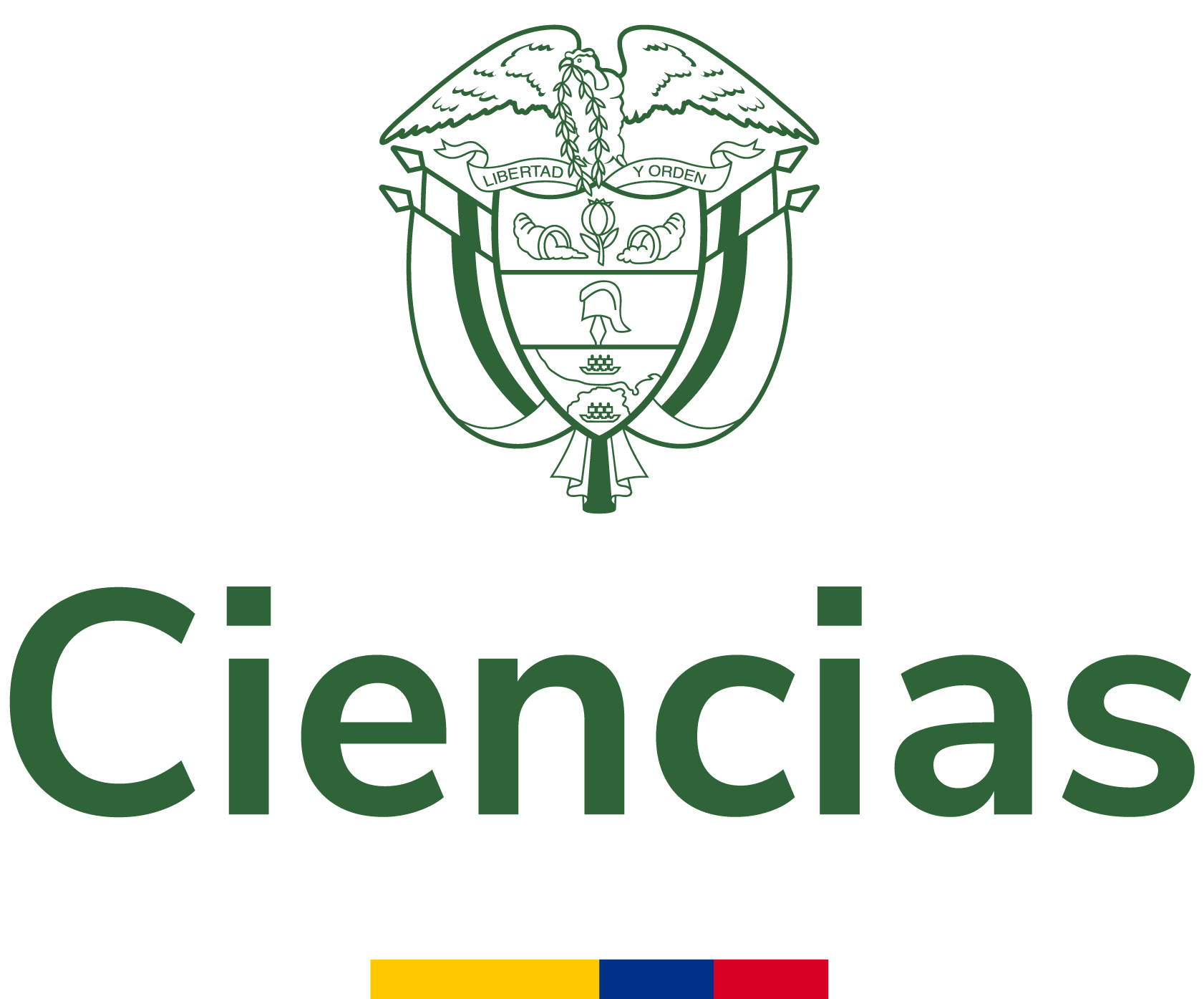DESARROLLO DE UNA HERRAMIENTA COMPUTACIONAL QUE PERMITA LA IDENTIFICACIÓN DE IDEAS SUICIDAS DESDE LA RED SOCIAL X
En el mundo, el suicidio representa el 5% de muertes posicionando ésta como unas de las principales causas de muerte en adolescentes. El procesamiento de lenguaje natural (PLN), es un campo que se viene estudiando y manejando hace años, actualmente puede usarse como una herramienta poderosa para la...
- Autores:
- Tipo de recurso:
- Fecha de publicación:
- 2024
- Institución:
- Universidad Católica de Pereira
- Repositorio:
- Repositorio Institucional - RIBUC
- Idioma:
- spa
- OAI Identifier:
- oai:repositorio.ucp.edu.co:10785/16609
- Acceso en línea:
- https://hdl.handle.net/10785/16609
https://repositorio.ucp.edu.co/home
- Palabra clave:
- 2. Ingeniería y Tecnología
Aprendizaje de Máquina
GATE
Herramienta computacional
Ideas suicidas
Procesamiento de Lenguaje Natural
Redes sociales
Machine Learning
Computational Tool
Suicidal ideation
Natural Language Processing
Social Networks
- Rights
- closedAccess
- License
- Atribución-NoComercial-SinDerivadas 4.0 Internacional (CC BY-NC-ND 4.0)
| id |
RepoRIBUC_e28e315086e4eaf232b588621a10b25e |
|---|---|
| oai_identifier_str |
oai:repositorio.ucp.edu.co:10785/16609 |
| network_acronym_str |
RepoRIBUC |
| network_name_str |
Repositorio Institucional - RIBUC |
| repository_id_str |
|
| dc.title.none.fl_str_mv |
DESARROLLO DE UNA HERRAMIENTA COMPUTACIONAL QUE PERMITA LA IDENTIFICACIÓN DE IDEAS SUICIDAS DESDE LA RED SOCIAL X |
| title |
DESARROLLO DE UNA HERRAMIENTA COMPUTACIONAL QUE PERMITA LA IDENTIFICACIÓN DE IDEAS SUICIDAS DESDE LA RED SOCIAL X |
| spellingShingle |
DESARROLLO DE UNA HERRAMIENTA COMPUTACIONAL QUE PERMITA LA IDENTIFICACIÓN DE IDEAS SUICIDAS DESDE LA RED SOCIAL X 2. Ingeniería y Tecnología Aprendizaje de Máquina GATE Herramienta computacional Ideas suicidas Procesamiento de Lenguaje Natural Redes sociales Machine Learning Computational Tool Suicidal ideation Natural Language Processing Social Networks |
| title_short |
DESARROLLO DE UNA HERRAMIENTA COMPUTACIONAL QUE PERMITA LA IDENTIFICACIÓN DE IDEAS SUICIDAS DESDE LA RED SOCIAL X |
| title_full |
DESARROLLO DE UNA HERRAMIENTA COMPUTACIONAL QUE PERMITA LA IDENTIFICACIÓN DE IDEAS SUICIDAS DESDE LA RED SOCIAL X |
| title_fullStr |
DESARROLLO DE UNA HERRAMIENTA COMPUTACIONAL QUE PERMITA LA IDENTIFICACIÓN DE IDEAS SUICIDAS DESDE LA RED SOCIAL X |
| title_full_unstemmed |
DESARROLLO DE UNA HERRAMIENTA COMPUTACIONAL QUE PERMITA LA IDENTIFICACIÓN DE IDEAS SUICIDAS DESDE LA RED SOCIAL X |
| title_sort |
DESARROLLO DE UNA HERRAMIENTA COMPUTACIONAL QUE PERMITA LA IDENTIFICACIÓN DE IDEAS SUICIDAS DESDE LA RED SOCIAL X |
| dc.contributor.none.fl_str_mv |
Blandón Andrade, Juan Carlos Universidad Católica de Pereira Medina Otálvaro, Carlos Mario Blandón Andrade, Juan Carlos |
| dc.subject.none.fl_str_mv |
2. Ingeniería y Tecnología Aprendizaje de Máquina GATE Herramienta computacional Ideas suicidas Procesamiento de Lenguaje Natural Redes sociales Machine Learning Computational Tool Suicidal ideation Natural Language Processing Social Networks |
| topic |
2. Ingeniería y Tecnología Aprendizaje de Máquina GATE Herramienta computacional Ideas suicidas Procesamiento de Lenguaje Natural Redes sociales Machine Learning Computational Tool Suicidal ideation Natural Language Processing Social Networks |
| description |
En el mundo, el suicidio representa el 5% de muertes posicionando ésta como unas de las principales causas de muerte en adolescentes. El procesamiento de lenguaje natural (PLN), es un campo que se viene estudiando y manejando hace años, actualmente puede usarse como una herramienta poderosa para la identificación de ideas suicidas. Con base al estado del arte, los autores manifiestan que usar herramientas de PLN es pertinente para detectar ideas suicidas en textos escritos, donde muchos de ellos se encuentran en las redes sociales. Mencionan la necesidad de la creación de herramientas computacionales que por medio de herramientas PLN pueda identificar ideas suicidas y así tratar de evitar que vidas alrededor del mundo se pierdan día a día por este fenómeno. En este documento se propone el desarrollo de una herramienta computacional en ambiente web utilizando la arquitectura denominada General Architecture for Text Engineering (GATE), que cuenta con un conjunto de herramientas para procesar lenguaje. También se utilizará el Framework Angular para el Frontend, Spring Boot para el Backend, así como una base de datos relacional MySQL. Se espera poder extraer tweets desde la red social X e identificar ideas suicidas. Se busca proporcionar un margen de tiempo más amplio para la intervención de organismos pertinentes y contribuir a la prevención de suicidios a nivel mundial. |
| publishDate |
2024 |
| dc.date.none.fl_str_mv |
2024 2025-04-08T22:36:49Z 2025-04-08T22:36:49Z |
| dc.type.none.fl_str_mv |
Trabajo de grado - Pregrado http://purl.org/coar/resource_type/c_7a1f http://purl.org/coar/version/c_970fb48d4fbd8a85 Text info:eu-repo/semantics/bachelorThesis http://purl.org/redcol/resource_type/TP info:eu-repo/semantics/publishedVersion |
| status_str |
publishedVersion |
| dc.identifier.none.fl_str_mv |
Gálvez Quintero, M. (2024). DESARROLLO DE UNA HERRAMIENTA COMPUTACIONAL QUE PERMITA LA IDENTIFICACIÓN DE IDEAS SUICIDAS DESDE LA RED SOCIAL X. Universidad Católica de Pereira. Disponible en: https://hdl.handle.net/10785/16609 https://hdl.handle.net/10785/16609 Universidad Católica de Pereira https://repositorio.ucp.edu.co/home |
| identifier_str_mv |
Gálvez Quintero, M. (2024). DESARROLLO DE UNA HERRAMIENTA COMPUTACIONAL QUE PERMITA LA IDENTIFICACIÓN DE IDEAS SUICIDAS DESDE LA RED SOCIAL X. Universidad Católica de Pereira. Disponible en: https://hdl.handle.net/10785/16609 Universidad Católica de Pereira |
| url |
https://hdl.handle.net/10785/16609 https://repositorio.ucp.edu.co/home |
| dc.language.none.fl_str_mv |
spa |
| language |
spa |
| dc.relation.none.fl_str_mv |
R. Lozano et al., “Global and regional mortality from 235 causes of death for 20 age groups in 1990 and 2010: a systematic analysis for the Global Burden of Disease Study 2010,” The Lancet, vol. 380, no. 9859, pp. 2095–2128, Dec. 2012, doi: 10.1016/S0140-6736(12)61728-0. B. Priyamvada et al., “Stacked CNN-LSTM approach for prediction of suicidal ideation on social media,” Multimed. TOOLS Appl., vol. 82, no. 18, pp. 27883–27904, Jul. 2023, doi: 10.1007/s11042-023-14431-z. S. Renjith, A. Abraham, S. B. Jyothi, L. Chandran, and J. Thomson, “An ensemble deep learning technique for detecting suicidal ideation from posts in social media platforms,” J. King Saud Univ. - Comput. Inf. Sci., vol. 34, no. 10, Part B, pp. 9564–9575, Nov. 2022, doi: 10.1016/j.jksuci.2021.11.010. B. L. Cook, A. M. Progovac, P. Chen, B. Mullin, S. Hou, and E. Baca-Garcia, “Novel Use of Natural Language Processing (NLP) to Predict Suicidal Ideation and Psychiatric Symptoms in a Text-Based Mental Health Intervention in Madrid,” Comput. Math. Methods Med., vol. 2016, p. e8708434, Sep. 2016, doi: 10.1155/2016/8708434. T. H. Aldhyani, S. N. Alsubari, A. S. Alshebami, H. Alkahtani, and Z. A. T. Ahmed, “Detecting and Analyzing Suicidal Ideation on Social Media Using Deep Learning and Machine Learning Models,” Int J Env. Res Public Health, vol. 2022, p. e12635, Oct. 2022, doi: 10.3390/ijerph191912635. V. Baby, D. Sudheshna, D. Sarvani, S. Vesangi, and S. R. Regatte, “An Integrated Approach for Suicidal Tendency Detection,” in 2022 4th International Conference on Advances in Computing, Communication Control and Networking (ICAC3N), Greater Noida, India, Dec. 2022, pp. 400–405. doi: 10.1109/ICAC3N56670.2022.10074359. Organización Panamericana de la Salud, “Una de cada 100 muertes es por suicidio,” 2023. Accessed: Jun. 17, 2024. [Online]. Available: https://www.paho.org/es/cada-100-muertes-espor-suicidio Grupo de Investigación PSICOSOC, Ed., “El sentido de vida en los jóvenes: redes sociales, relaciones significativas y actividades de ocio.” Accessed: Apr. 28, 2024. [Online]. Available: https://www.injuve.es/sites/default/files/tema4_revista95.pdf G. Sierra, “Detección de ideación suicida en redes sociales.” Instituto de Ingeniería UNAM. Accessed: Apr. 28, 2024. [Online]. Available: https://www.iingen.unam.mx/esmx/AlmacenDigital/Gaceta/Gaceta_Julio_Agosto_2022/Paginas/Deteccion-de-ideacionsuicida-en-redes-sociales.aspx A. M. Schoene, L. Bojanic, M. Nghiem, I. M. Hunt, and S. Ananiadou, “Classifying suiciderelated content and emotions on Twitter using Graph Convolutional Neural Networks,” IEEE Trans. Affect. Comput., pp. 1–12, 2022, doi: 10.1109/TAFFC.2022.3221683. A. Cortez Vásquez, Procesamiento de Lenguaje Natural: Componentes y técnicas, 1st ed. España: Editorial Académica Española, 2020. R. Mitkov, The Oxford Handbook of Computational Linguistics, 1st ed. Oxford, UK: Oxford University Press, 2003. T. Naeem, “Comprender los datos estructurados, semiestructurados y no estructurados,” Jul. 2024. Accessed: Jul. 29, 2024. [Online]. Available: https://www.astera.com/es/type/blog/structured-semi-structured-and-unstructured-data/ R. Díaz, “Métricas de Clasificación.” Accessed: Jul. 29, 2024. [Online]. Available: https://www.themachinelearners.com/metricas-de-clasificacion/ J. C. Blandón A., “Extracción de instancias de una clase desde textos en lenguaje natural independientes del dominio de aplicación,” PH.D. Thesis, Universidad Nacional de Colombia, 75 Medellín, Colombia, 2017. [Online]. Available: https://repositorio.unal.edu.co/handle/unal/58998# A. Moreno, “Procesamiento del lenguaje natural ¿qué es?,” 2018. Accessed: Jul. 25, 2024. [Online]. Available: https://www.iic.uam.es/inteligencia/que-es-procesamiento-del-lenguajenatural/ Repsol, “Qué es y cuáles son los beneficios de la inteligencia artificial en la sociedad Progreso de la mano de la última tecnología.” Accessed: Jul. 22, 2024. [Online]. Available: https://www.repsol.com/es/energia-futuro/tecnologia-innovacion/inteligenciaartificial/index.cshtml P. Blanco, “9 aplicaciones del procesamiento del lenguaje natural,” Nov. 2023. Accessed: Jul. 29, 2024. [Online]. Available: https://www.educaopen.com/digital-lab/blog/inteligenciaartificial/aplicaciones-del-procesamiento-de-lenguaje-natural N. Teslenko, “Técnicas PLN: los métodos de procesamiento de lenguaje natural más poderosos,” Mar. 2023. Accessed: Jul. 24, 2024. [Online]. Available: https://blog.pangeanic.com/es/tecnicas-pln-metodos-de-procesamiento-lenguaje-natural R. S. Pressman, Ingeniería del Software. Un enfoque práctico, 7th ed. México: Mc Graw-Hill, 2010. A. Weitzenfeld, Ingeniería del software orientada a objetos con UML, Java e Internet. México: Thomson, 2005. P. Londoño, “Qué es Python, para qué sirve y cómo se usa (+ recursos para aprender),” Apr. 2023. Accessed: Jul. 29, 2024. [Online]. Available: https://blog.hubspot.es/website/que-espython#que-es Unirfp, “Framework: qué es, para qué sirve y algunos ejemplos,” Sep. 2022. Amazon, “¿Cuál es la diferencia entre el front end y back end en el desarrollo de aplicaciones?” Accessed: Jun. 10, 2024. [Online]. Available: https://aws.amazon.com/es/compare/the-difference-between-frontend-andbackend/#:~:text=El%20t%C3%A9rmino%20front%20end%20hace,las%20im%C3%A1gene s%20y%20los%20gr%C3%A1ficos M. J. Gonçalves, “¿Qué es Angular y para qué sirve?,” Oct. 2021. J. Sierra, “¿Qué es Tailwind CSS? Guía para principiantes,” Jan. 2023. Accessed: Jul. 29, 2024. [Online]. Available: https://www.freecodecamp.org/espanol/news/que-es-tailwind-cssguia-para-principiantes/ I. J. Bautista García, “Backend y Frontend, ¿Qué es y cómo funcionan en la programación?,” Mar. 2021. Accessed: Jul. 29, 2024. [Online]. Available: https://www.servnet.mx/blog/backend-y-frontend-partes-fundamentales-de-la-programacionde-una-aplicacion-web IBM, “¿Qué es Java Spring Boot?” Accessed: Jun. 20, 2024. [Online]. Available: https://www.ibm.com/mx-es/topics/java-spring-boot M. Azure, “¿Qué es Java Spring Boot?” Accessed: Jun. 20, 2024. [Online]. Available: https://azure.microsoft.com/es-mx/resources/cloud-computing-dictionary/what-is-java-springboot Amazon, “¿Qué es una interfaz de programación de aplicaciones (API)?” Accessed: Jul. 29, 2024. [Online]. Available: https://aws.amazon.com/es/what-is/api/ editorial Etecé, “Base de datos,” Nov. 2023. Accessed: Jul. 29, 2024. [Online]. Available: https://concepto.de/base-de-datos/ IBM, “¿Qué es una base de datos relacional?” Accessed: Jul. 29, 2024. [Online]. Available: https://www.ibm.com/mx-es/topics/relational-databases Universidad Francisco de Vitoria, “Bases de datos no relacionales.” Accessed: Jul. 29, 2024. [Online]. Available: https://www.ufv.es/cetys/blog/bases-de-datos-no- 76 relacionales/#:~:text=Una%20base%20de%20datos%20no%20relacional%2C%20tambi%C3 %A9n%20conocida%20como%20base,bases%20de%20datos%20relacionales%20tradicional es L. Lomelí, “Metodologías de Desarrollo de Software: ¿Cuál Elegir?,” Dec. 2022. Accessed: Jul. 30, 2024. [Online]. Available: https://blog.innevo.com/metodologias-desarrollo-software GATE, “GATE: a full-lifecycle open source solution for text processing.” Accessed: Jun. 20, 2024. [Online]. Available: https://gate.ac.uk/overview.html J. A. Saavedra, “Qué es Github y para qué sirve: una guía para principiantes,” Jun. 2023. Accessed: Jul. 30, 2024. [Online]. Available: https://ebac.mx/blog/que-es-github Y. Muradas, “Qué es Postman y primeros pasos,” Jun. 2019. Accessed: Jul. 30, 2024. [Online]. Available: https://openwebinars.net/blog/que-es-postman/ I. IntelliJ, “El IDE líder para Java y Kotlin.” Accessed: Jul. 30, 2024. [Online]. Available: https://www.jetbrains.com/es-es/idea/ L. Á. Domínguez Coral, “¿Qué es Visual Studio Code y cómo se instala?,” Apr. 2023. Accessed: Jul. 30, 2024. [Online]. Available: https://www.eltiempo.com/tecnosfera/apps/visual-studio-code-es-un-editor-de-codigo-fuentede-microsoft-761049 Q.-Y. Zhong et al., “Use of natural language processing in electronic medical records to identify pregnant women with suicidal behavior: towards a solution to the complex classification problem,” Eur. J. Epidemiol., vol. 34, no. 2, pp. 153–162, Feb. 2019, doi: 10.1007/s10654-018-0470-0. F. Haque, R. U. Nur, S. A. Jahan, Z. Mahmud, and F. M. Shah, “A Transformer Based Approach To Detect Suicidal Ideation Using Pre-Trained Language Models,” in 2020 23rd International Conference on Computer and Information Technology (ICCIT), DHAKA, Bangladesh, Dec. 2020, pp. 1–5. doi: 10.1109/ICCIT51783.2020.9392692. M. Cusick et al., “Portability of natural language processing methods to detect suicidality from clinical text in US and UK electronic health records,” J. Affect. Disord. Rep., vol. 10, p. 100430, Dec. 2022, doi: 10.1016/j.jadr.2022.100430. |
| dc.rights.none.fl_str_mv |
Atribución-NoComercial-SinDerivadas 4.0 Internacional (CC BY-NC-ND 4.0) info:eu-repo/semantics/closedAccess http://purl.org/coar/access_right/c_14cb |
| rights_invalid_str_mv |
Atribución-NoComercial-SinDerivadas 4.0 Internacional (CC BY-NC-ND 4.0) http://purl.org/coar/access_right/c_14cb |
| eu_rights_str_mv |
closedAccess |
| dc.format.none.fl_str_mv |
84 application/pdf application/pdf |
| dc.publisher.none.fl_str_mv |
Universidad Católica de Pereira Facultad de Ciencias Básicas e Ingeniería Pereira Ingeniería de Sistemas y Telecomunicaciones |
| publisher.none.fl_str_mv |
Universidad Católica de Pereira Facultad de Ciencias Básicas e Ingeniería Pereira Ingeniería de Sistemas y Telecomunicaciones |
| institution |
Universidad Católica de Pereira |
| repository.name.fl_str_mv |
|
| repository.mail.fl_str_mv |
|
| _version_ |
1844494655163465728 |
| spelling |
DESARROLLO DE UNA HERRAMIENTA COMPUTACIONAL QUE PERMITA LA IDENTIFICACIÓN DE IDEAS SUICIDAS DESDE LA RED SOCIAL X2. Ingeniería y TecnologíaAprendizaje de MáquinaGATEHerramienta computacionalIdeas suicidasProcesamiento de Lenguaje NaturalRedes socialesMachine LearningComputational ToolSuicidal ideationNatural Language ProcessingSocial NetworksEn el mundo, el suicidio representa el 5% de muertes posicionando ésta como unas de las principales causas de muerte en adolescentes. El procesamiento de lenguaje natural (PLN), es un campo que se viene estudiando y manejando hace años, actualmente puede usarse como una herramienta poderosa para la identificación de ideas suicidas. Con base al estado del arte, los autores manifiestan que usar herramientas de PLN es pertinente para detectar ideas suicidas en textos escritos, donde muchos de ellos se encuentran en las redes sociales. Mencionan la necesidad de la creación de herramientas computacionales que por medio de herramientas PLN pueda identificar ideas suicidas y así tratar de evitar que vidas alrededor del mundo se pierdan día a día por este fenómeno. En este documento se propone el desarrollo de una herramienta computacional en ambiente web utilizando la arquitectura denominada General Architecture for Text Engineering (GATE), que cuenta con un conjunto de herramientas para procesar lenguaje. También se utilizará el Framework Angular para el Frontend, Spring Boot para el Backend, así como una base de datos relacional MySQL. Se espera poder extraer tweets desde la red social X e identificar ideas suicidas. Se busca proporcionar un margen de tiempo más amplio para la intervención de organismos pertinentes y contribuir a la prevención de suicidios a nivel mundial.Suicide accounts for approximately 5% of deaths worldwide, making it one of the leading causes of death among adolescents. Natural Language Processing (NLP), a field that has been studied and developed for years, can now be utilized as a powerful tool for identifying suicidal ideation. Based on the current state of research, the authors emphasize the relevance of using NLP tools to detect suicidal thoughts in written texts, many of which are found on social networks. They highlight the need for the development of computational tools that, through NLP techniques, can identify suicidal ideation and potentially help prevent lives from being lost every day due to this phenomenon. We propose the development of a web-based computational tool using the General Architecture for Text Engineering (GATE), which provides a suite of tools for language processing. Additionally, the tool will use the Angular Framework for the frontend, Spring Boot for the backend, and a MySQL relational database. It is expected to extract tweets from the social network X and identify suicidal ideation. The goal is to offer a wider time window for intervention by relevant agencies and to contribute to suicide prevention efforts worldwide.RESUMEN ABSTRACT 1. INTRODUCCIÓN 2. PLANTEAMIENTO DEL PROBLEMA 4. JUSTIFICACIÓN 5. OBJETIVOS 5.1 OBJETIVO GENERAL 5.2 OBJETIVOS ESPECÍFICOS 6. MARCO TEÓRICO 6.1. Procesamiento de lenguaje natural 6.1.1. Corpus 6.1.2. Tipos de Datos 6.1.3. Ambigüedad 6.1.4. Criterios de Evaluación 6.1.5. Técnicas de NLP 6.1.6. Aplicaciones del PLN 6.2. Ingeniería de Software 6.3. Lenguajes de programación 6.3.1. Java 6.3.2. Python 6.3.3. Frameworks 6.3.4. Frontend 6.3.5. Backend 6.3.6. API 6.3.7. Bases de datos 6.3.8. Metodologías de desarrollo 6.4. Herramientas 6.4.1. Gate 6.4.2. GitHub 6.4.3. Postman 6.4.4. IntelliJ IDEA 6.4.5. Visual Studio Code 7. METODOLOGÍA 7.1. Cronograma 7.2. Presupuesto 8. DESARROLLO DEL PROYECTO 8.1. Antecedentes 8.2. Aplicación de la metodología SCRUM 8.2.1. Sprint I 8.2.2. Sprint II 8.2.3. Sprint III 8.2.4. Sprint IV 8.2.5. Sprint V 8.2.6. Sprint VI 9. ANÁLISIS DE RESULTADOS 10. CONCLUSIONES 11. RECOMENDACIONES 12. REFERENCIASPregradoIngeniero de Sistemas y TelecomunicacionesUniversidad Católica de PereiraFacultad de Ciencias Básicas e IngenieríaPereiraIngeniería de Sistemas y TelecomunicacionesBlandón Andrade, Juan CarlosUniversidad Católica de PereiraMedina Otálvaro, Carlos MarioBlandón Andrade, Juan CarlosGálvez Quintero, Miguel Ángel2025-04-08T22:36:49Z2025-04-08T22:36:49Z2024Trabajo de grado - Pregradohttp://purl.org/coar/resource_type/c_7a1fhttp://purl.org/coar/version/c_970fb48d4fbd8a85Textinfo:eu-repo/semantics/bachelorThesishttp://purl.org/redcol/resource_type/TPinfo:eu-repo/semantics/publishedVersion84application/pdfapplication/pdfGálvez Quintero, M. (2024). DESARROLLO DE UNA HERRAMIENTA COMPUTACIONAL QUE PERMITA LA IDENTIFICACIÓN DE IDEAS SUICIDAS DESDE LA RED SOCIAL X. Universidad Católica de Pereira. Disponible en: https://hdl.handle.net/10785/16609https://hdl.handle.net/10785/16609Universidad Católica de Pereirahttps://repositorio.ucp.edu.co/homespaR. Lozano et al., “Global and regional mortality from 235 causes of death for 20 age groups in 1990 and 2010: a systematic analysis for the Global Burden of Disease Study 2010,” The Lancet, vol. 380, no. 9859, pp. 2095–2128, Dec. 2012, doi: 10.1016/S0140-6736(12)61728-0.B. Priyamvada et al., “Stacked CNN-LSTM approach for prediction of suicidal ideation on social media,” Multimed. TOOLS Appl., vol. 82, no. 18, pp. 27883–27904, Jul. 2023, doi: 10.1007/s11042-023-14431-z.S. Renjith, A. Abraham, S. B. Jyothi, L. Chandran, and J. Thomson, “An ensemble deep learning technique for detecting suicidal ideation from posts in social media platforms,” J. King Saud Univ. - Comput. Inf. Sci., vol. 34, no. 10, Part B, pp. 9564–9575, Nov. 2022, doi: 10.1016/j.jksuci.2021.11.010.B. L. Cook, A. M. Progovac, P. Chen, B. Mullin, S. Hou, and E. Baca-Garcia, “Novel Use of Natural Language Processing (NLP) to Predict Suicidal Ideation and Psychiatric Symptoms in a Text-Based Mental Health Intervention in Madrid,” Comput. Math. Methods Med., vol. 2016, p. e8708434, Sep. 2016, doi: 10.1155/2016/8708434.T. H. Aldhyani, S. N. Alsubari, A. S. Alshebami, H. Alkahtani, and Z. A. T. Ahmed, “Detecting and Analyzing Suicidal Ideation on Social Media Using Deep Learning and Machine Learning Models,” Int J Env. Res Public Health, vol. 2022, p. e12635, Oct. 2022, doi: 10.3390/ijerph191912635.V. Baby, D. Sudheshna, D. Sarvani, S. Vesangi, and S. R. Regatte, “An Integrated Approach for Suicidal Tendency Detection,” in 2022 4th International Conference on Advances in Computing, Communication Control and Networking (ICAC3N), Greater Noida, India, Dec. 2022, pp. 400–405. doi: 10.1109/ICAC3N56670.2022.10074359.Organización Panamericana de la Salud, “Una de cada 100 muertes es por suicidio,” 2023. Accessed: Jun. 17, 2024. [Online]. Available: https://www.paho.org/es/cada-100-muertes-espor-suicidioGrupo de Investigación PSICOSOC, Ed., “El sentido de vida en los jóvenes: redes sociales, relaciones significativas y actividades de ocio.” Accessed: Apr. 28, 2024. [Online]. Available: https://www.injuve.es/sites/default/files/tema4_revista95.pdfG. Sierra, “Detección de ideación suicida en redes sociales.” Instituto de Ingeniería UNAM. Accessed: Apr. 28, 2024. [Online]. Available: https://www.iingen.unam.mx/esmx/AlmacenDigital/Gaceta/Gaceta_Julio_Agosto_2022/Paginas/Deteccion-de-ideacionsuicida-en-redes-sociales.aspxA. M. Schoene, L. Bojanic, M. Nghiem, I. M. Hunt, and S. Ananiadou, “Classifying suiciderelated content and emotions on Twitter using Graph Convolutional Neural Networks,” IEEE Trans. Affect. Comput., pp. 1–12, 2022, doi: 10.1109/TAFFC.2022.3221683.A. Cortez Vásquez, Procesamiento de Lenguaje Natural: Componentes y técnicas, 1st ed. España: Editorial Académica Española, 2020.R. Mitkov, The Oxford Handbook of Computational Linguistics, 1st ed. Oxford, UK: Oxford University Press, 2003.T. Naeem, “Comprender los datos estructurados, semiestructurados y no estructurados,” Jul. 2024. Accessed: Jul. 29, 2024. [Online]. Available: https://www.astera.com/es/type/blog/structured-semi-structured-and-unstructured-data/R. Díaz, “Métricas de Clasificación.” Accessed: Jul. 29, 2024. [Online]. Available: https://www.themachinelearners.com/metricas-de-clasificacion/J. C. Blandón A., “Extracción de instancias de una clase desde textos en lenguaje natural independientes del dominio de aplicación,” PH.D. Thesis, Universidad Nacional de Colombia, 75 Medellín, Colombia, 2017. [Online]. Available: https://repositorio.unal.edu.co/handle/unal/58998#A. Moreno, “Procesamiento del lenguaje natural ¿qué es?,” 2018. Accessed: Jul. 25, 2024. [Online]. Available: https://www.iic.uam.es/inteligencia/que-es-procesamiento-del-lenguajenatural/Repsol, “Qué es y cuáles son los beneficios de la inteligencia artificial en la sociedad Progreso de la mano de la última tecnología.” Accessed: Jul. 22, 2024. [Online]. Available: https://www.repsol.com/es/energia-futuro/tecnologia-innovacion/inteligenciaartificial/index.cshtmlP. Blanco, “9 aplicaciones del procesamiento del lenguaje natural,” Nov. 2023. Accessed: Jul. 29, 2024. [Online]. Available: https://www.educaopen.com/digital-lab/blog/inteligenciaartificial/aplicaciones-del-procesamiento-de-lenguaje-naturalN. Teslenko, “Técnicas PLN: los métodos de procesamiento de lenguaje natural más poderosos,” Mar. 2023. Accessed: Jul. 24, 2024. [Online]. Available: https://blog.pangeanic.com/es/tecnicas-pln-metodos-de-procesamiento-lenguaje-naturalR. S. Pressman, Ingeniería del Software. Un enfoque práctico, 7th ed. México: Mc Graw-Hill, 2010.A. Weitzenfeld, Ingeniería del software orientada a objetos con UML, Java e Internet. México: Thomson, 2005.P. Londoño, “Qué es Python, para qué sirve y cómo se usa (+ recursos para aprender),” Apr. 2023. Accessed: Jul. 29, 2024. [Online]. Available: https://blog.hubspot.es/website/que-espython#que-esUnirfp, “Framework: qué es, para qué sirve y algunos ejemplos,” Sep. 2022.Amazon, “¿Cuál es la diferencia entre el front end y back end en el desarrollo de aplicaciones?” Accessed: Jun. 10, 2024. [Online]. Available: https://aws.amazon.com/es/compare/the-difference-between-frontend-andbackend/#:~:text=El%20t%C3%A9rmino%20front%20end%20hace,las%20im%C3%A1gene s%20y%20los%20gr%C3%A1ficosM. J. Gonçalves, “¿Qué es Angular y para qué sirve?,” Oct. 2021.J. Sierra, “¿Qué es Tailwind CSS? Guía para principiantes,” Jan. 2023. Accessed: Jul. 29, 2024. [Online]. Available: https://www.freecodecamp.org/espanol/news/que-es-tailwind-cssguia-para-principiantes/I. J. Bautista García, “Backend y Frontend, ¿Qué es y cómo funcionan en la programación?,” Mar. 2021. Accessed: Jul. 29, 2024. [Online]. Available: https://www.servnet.mx/blog/backend-y-frontend-partes-fundamentales-de-la-programacionde-una-aplicacion-webIBM, “¿Qué es Java Spring Boot?” Accessed: Jun. 20, 2024. [Online]. Available: https://www.ibm.com/mx-es/topics/java-spring-bootM. Azure, “¿Qué es Java Spring Boot?” Accessed: Jun. 20, 2024. [Online]. Available: https://azure.microsoft.com/es-mx/resources/cloud-computing-dictionary/what-is-java-springbootAmazon, “¿Qué es una interfaz de programación de aplicaciones (API)?” Accessed: Jul. 29, 2024. [Online]. Available: https://aws.amazon.com/es/what-is/api/editorial Etecé, “Base de datos,” Nov. 2023. Accessed: Jul. 29, 2024. [Online]. Available: https://concepto.de/base-de-datos/IBM, “¿Qué es una base de datos relacional?” Accessed: Jul. 29, 2024. [Online]. Available: https://www.ibm.com/mx-es/topics/relational-databasesUniversidad Francisco de Vitoria, “Bases de datos no relacionales.” Accessed: Jul. 29, 2024. [Online]. Available: https://www.ufv.es/cetys/blog/bases-de-datos-no- 76 relacionales/#:~:text=Una%20base%20de%20datos%20no%20relacional%2C%20tambi%C3 %A9n%20conocida%20como%20base,bases%20de%20datos%20relacionales%20tradicional esL. Lomelí, “Metodologías de Desarrollo de Software: ¿Cuál Elegir?,” Dec. 2022. Accessed: Jul. 30, 2024. [Online]. Available: https://blog.innevo.com/metodologias-desarrollo-softwareGATE, “GATE: a full-lifecycle open source solution for text processing.” Accessed: Jun. 20, 2024. [Online]. Available: https://gate.ac.uk/overview.htmlJ. A. Saavedra, “Qué es Github y para qué sirve: una guía para principiantes,” Jun. 2023. Accessed: Jul. 30, 2024. [Online]. Available: https://ebac.mx/blog/que-es-githubY. Muradas, “Qué es Postman y primeros pasos,” Jun. 2019. Accessed: Jul. 30, 2024. [Online]. Available: https://openwebinars.net/blog/que-es-postman/I. IntelliJ, “El IDE líder para Java y Kotlin.” Accessed: Jul. 30, 2024. [Online]. Available: https://www.jetbrains.com/es-es/idea/L. Á. Domínguez Coral, “¿Qué es Visual Studio Code y cómo se instala?,” Apr. 2023. Accessed: Jul. 30, 2024. [Online]. Available: https://www.eltiempo.com/tecnosfera/apps/visual-studio-code-es-un-editor-de-codigo-fuentede-microsoft-761049Q.-Y. Zhong et al., “Use of natural language processing in electronic medical records to identify pregnant women with suicidal behavior: towards a solution to the complex classification problem,” Eur. J. Epidemiol., vol. 34, no. 2, pp. 153–162, Feb. 2019, doi: 10.1007/s10654-018-0470-0.F. Haque, R. U. Nur, S. A. Jahan, Z. Mahmud, and F. M. Shah, “A Transformer Based Approach To Detect Suicidal Ideation Using Pre-Trained Language Models,” in 2020 23rd International Conference on Computer and Information Technology (ICCIT), DHAKA, Bangladesh, Dec. 2020, pp. 1–5. doi: 10.1109/ICCIT51783.2020.9392692.M. Cusick et al., “Portability of natural language processing methods to detect suicidality from clinical text in US and UK electronic health records,” J. Affect. Disord. Rep., vol. 10, p. 100430, Dec. 2022, doi: 10.1016/j.jadr.2022.100430.Atribución-NoComercial-SinDerivadas 4.0 Internacional (CC BY-NC-ND 4.0)info:eu-repo/semantics/closedAccesshttp://purl.org/coar/access_right/c_14cboai:repositorio.ucp.edu.co:10785/166092025-04-10T08:01:22Z |






